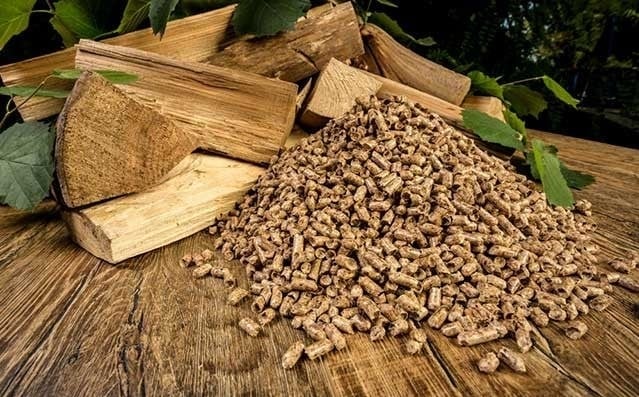November 18, 2025 | 23:21 GMT +7
November 18, 2025 | 23:21 GMT +7
Hotline: 0913.378.918
November 18, 2025 | 23:21 GMT +7
Hotline: 0913.378.918

Wood chips and wood pellets are popular in the Chinese and Japanese markets. Photo: nguyenlieudot.
The 2023 wood industry overview report by the Vietnam Wood and Forest Products Association shows that 2023 was a difficult year for Vietnam's wood industry as consumers tightened their spending. However, wood chip and pellet exports still brought nearly US$ 2.9 billion to Vietnam.
Specifically, our country exported nearly 14.42 million tons of wood chips, worth US$ 2.22 billion, accounting for 16.8% of the total export turnover of the entire wood industry. Compared to 2022, wood chip exports decreased by 8.8% in volume and decreased by 20.4% in value but increased by 5.9% in volume and increased sharply by 27.7% compared to 2021.
Our country's wood scrap products are exported to 13 markets. China and Japan are Vietnam's two largest import markets, accounting for 92.4% of total output and 92.2% of total export value.
According to the Forestry Department, in 2023, the entire industry will exploit about 19 million ster of firewood (unit of volume of firewood). This is the main input material for wood chip and pellet production. In addition, by-products of the wood processing and manufacturing industry, such as scraps, chips, shavings, sawdust... are also used to produce wood pellets and chips.
Mr. Nguyen Chanh Phuong, Director of Danh Moc Company, Vice President of the Handicraft and Wood Industry Association of Ho Chi Minh City (Hawa), said that from August last year until now, export sales of wood and wood products of Vietnam increased by an average of 3-5%. In January, export turnover of wood and wood products earned nearly US$1.5 billion, up more than 72% over the same period last year and is on the rise. Exports of wood chips and pellets in the first month of the year increased by over 22% over the same period last year.
"With the current strong growth rate, Vietnam can reach US$ 17 billion this year," Mr. Phuong said.
Similarly, according to wood chip exporters, this group still has much potential for development. Wood pellet turnover could reach US$ 1 billion in the near future.
Translated by Tuan Huy

(VAN) 'If we can address disease challenges and properly plan farming zones, Vietnamese shrimp can absolutely rise to lead the world,' Mr. Le Van Quang affirmed.

(VAN) The year 2025 continues to mark a significant footprint for Chanh Thu Fruit Import-Export Group Joint Stock Company (Chanh Thu Group) in the international market.

(VAN) Participating in the exhibition celebrating the 80-year tradition of the Agriculture and Environment sector, Dong Giao Food Export Joint Stock Company (DOVECO) showcased a range of products utilizing new technologies.

(VAN) Vietnam’s pepper export turnover in the first 10 months of 2025 reached $1.39 billion, already surpassing the full-year figure of 2024.

(VAN) AGRITECHNICA 2025 has impressively reaffirmed its position as the world’s leading trade fair for agricultural machinery.
/2025/11/17/4947-2-104601_225.jpg)
(VAN) The international market is growing rapidly, creating major opportunities for Viet Nam's tilapia industry.
/2025/11/17/1234-2-010716_981.jpg)
(VAN) Deputy General Director of Viet Nhat Group Nguyen Dang Ngoc shared experiences on building linkage chains and developing sustainable tilapia farming that meets international standards.